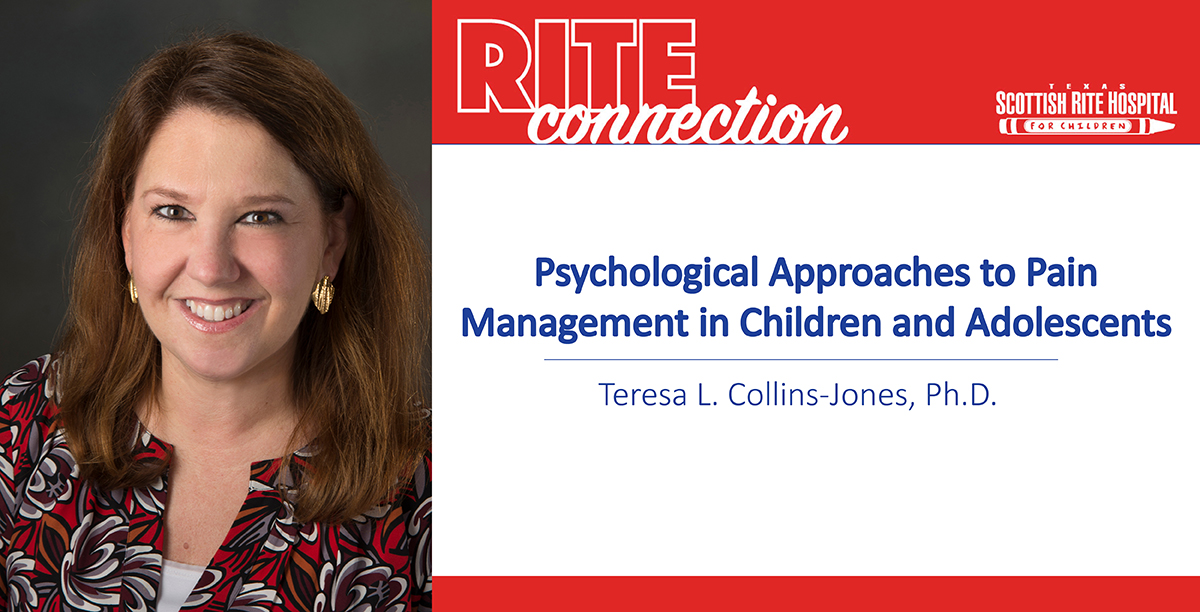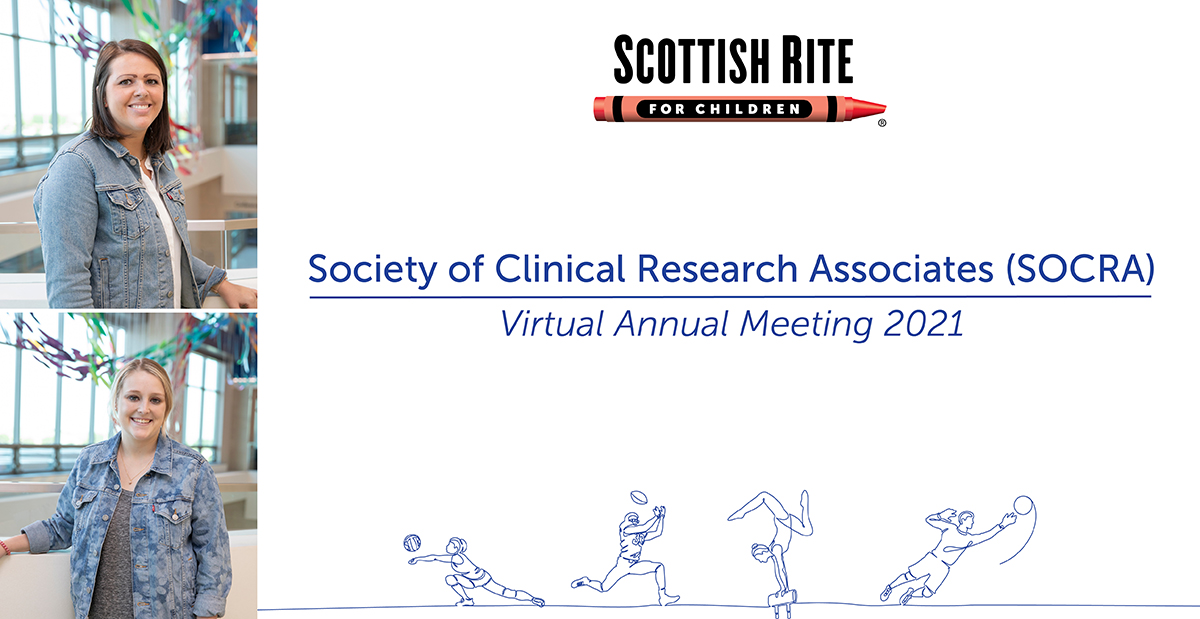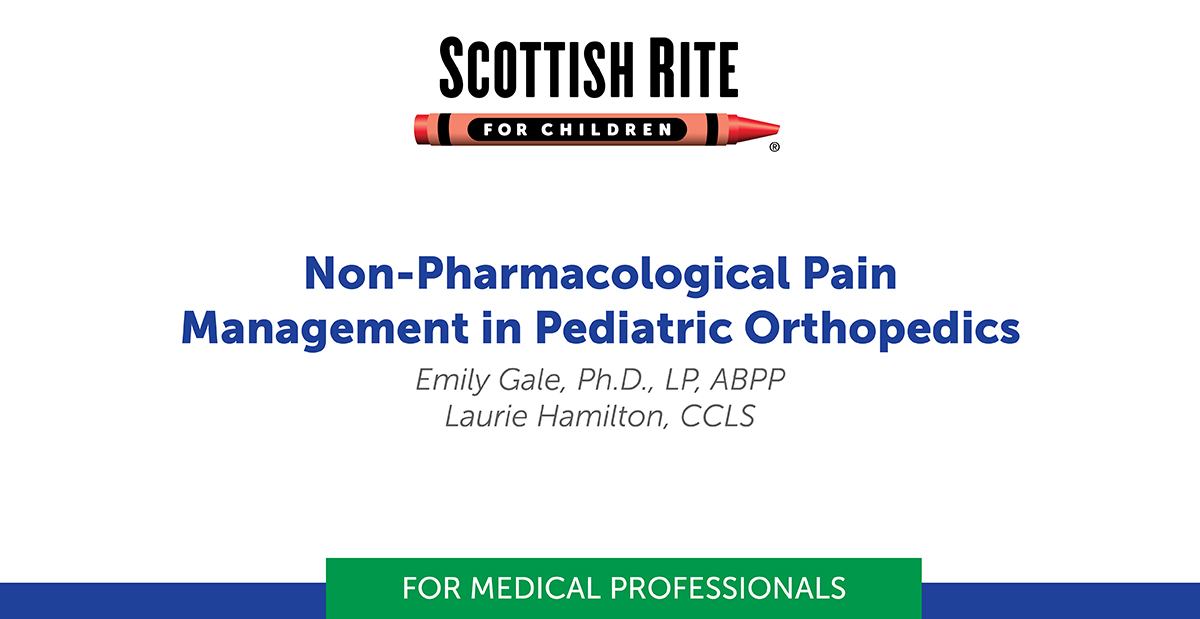
Jun 19, 2019 / Psychology
Psychological Approaches to Pain Management in Children and Adolescents
Key messages from a presentation by Teresa L. Collins-Jones, Ph.D., at Coffee, Kids and Sports Medicine.
Watch the lecture
Psychological assessment and care are critical parts of treatment for children and adolescents. Studies have shown that considering mental and emotional factors before, during and after medical procedures will often lead to a shorter rehabilitation period and a quicker recovery.
It is important to consult with a child before surgery. Every child experiences pain differently, and just having a conversation about the surgery and recovery can help alleviate some stress that might contribute to pain.
“Pain is multidimensional,” Collins-Jones says. “It’s not just a fleeting feeling, but something that affects a child’s ability to function and enjoy life. Letting them voice their thoughts and fears about pain, as well as beliefs about their treatment and recovery, gives them an outlet to identify and address what they are feeling.”
Collins-Jones explains that these discussions can help reduce the intensity of the pain and improve the patient’s quality of life.
The team also recognizes and records patterns in pain and coping in patients with similar conditions. From these observations, the hospital develops and performs studies to better identify patients who may be more likely to struggle with pain and anxiety symptoms. Intervention can be offered in early stages of care.
At Scottish Rite Hospital, we are lucky to have a team of doctors who understand the importance of integrating pediatric psychology into a child’s treatment plan. The hospital has psychologists who are ready to consult patients during clinic visits and provide ongoing care when needed. We also have child life specialists who support patients before and throughout procedures to help explain treatments and what to expect at each step. This simple understanding can significantly reduce fear and anxiety in the patient.
Watch the lecture
Psychological assessment and care are critical parts of treatment for children and adolescents. Studies have shown that considering mental and emotional factors before, during and after medical procedures will often lead to a shorter rehabilitation period and a quicker recovery.
It is important to consult with a child before surgery. Every child experiences pain differently, and just having a conversation about the surgery and recovery can help alleviate some stress that might contribute to pain.
“Pain is multidimensional,” Collins-Jones says. “It’s not just a fleeting feeling, but something that affects a child’s ability to function and enjoy life. Letting them voice their thoughts and fears about pain, as well as beliefs about their treatment and recovery, gives them an outlet to identify and address what they are feeling.”
Collins-Jones explains that these discussions can help reduce the intensity of the pain and improve the patient’s quality of life.
The team also recognizes and records patterns in pain and coping in patients with similar conditions. From these observations, the hospital develops and performs studies to better identify patients who may be more likely to struggle with pain and anxiety symptoms. Intervention can be offered in early stages of care.
At Scottish Rite Hospital, we are lucky to have a team of doctors who understand the importance of integrating pediatric psychology into a child’s treatment plan. The hospital has psychologists who are ready to consult patients during clinic visits and provide ongoing care when needed. We also have child life specialists who support patients before and throughout procedures to help explain treatments and what to expect at each step. This simple understanding can significantly reduce fear and anxiety in the patient.



